Early 1930s Type-1 Us Distinguished Flying Cross Medal Case
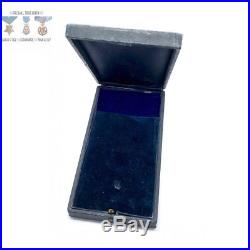
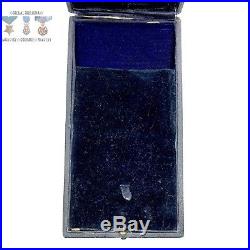

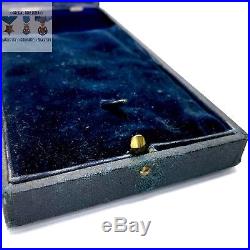
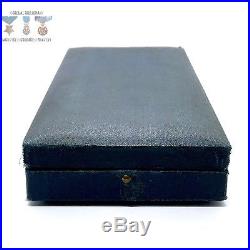
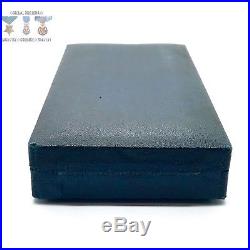
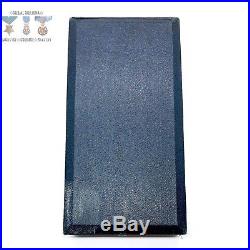
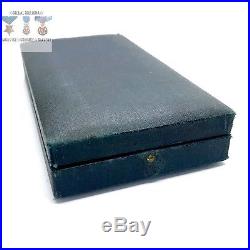

EARLY TYPE-1 1930S UNITED STATES DISTINGUISHED FLYING CROSS MEDAL CASE, LOCKING PUSH BUTTON TYPE. (TOP INSIDE PART MISSING & REPAIRED). The Distinguished Flying Cross is a military decoration awarded to any officer or enlisted member of the United States Armed Forces who distinguishes himself or herself in support of operations by heroism or extraordinary achievement while participating in an aerial flight, subsequent to November 11, 1918. The first award of the Distinguished Flying Cross was made by President Calvin Coolidge on May 2, 1927, to ten aviators of the U. Army Air Corps who had participated in the U. Army Pan American Flight, which took place from December 21, 1926 to May 2, 1927. Two of the airmen died in a mid-air collision trying to land at Buenos Aires on February 26, 1927, and received their awards posthumously. Since the award had only been authorized by Congress the previous year, no medals had yet been struck, and the Pan American airmen initially received only certificates. Among the ten airmen were Major Herbert A. Dargue, Captains Ira C. Eaker and Muir S. Fairchild, and 1st Lt. Charles Lindbergh received the first presentation of the medal little more than a month later, from Coolidge during the Washington, D. Homecoming reception on June 11, 1927, from his trans-Atlantic flight. The medal had hurriedly been struck and readied just for that occasion. Interestingly, the 1927 War Department General Order G. 8, authorizing Lindbergh’s DFC states that it was awarded by the President, while the General Order G. 6 for the Pan American Flyers’ DFC citation notes that the War Department awarded it by direction of the President. The first Distinguished Flying Cross to be awarded to a Naval Aviator was received by then Commander Richard E. Byrd, USN for his trans-Atlantic flight from June 29 to July 1, 1927 from New York City to the coast of France. Byrd, along with his pilot, Machinist Floyd Bennett, received the Medal of Honor for their historic flight to the North Pole on May 9, 1926 but they did not receive the DFC for that flight as the DFC had not yet been created. Numerous military recipients of the medal would later earn greater fame in other occupationsa number of astronauts, actors, and politicians including former President George H. Bush have been Distinguished Flying Cross recipients. DFC awards could be retroactive to cover notable achievements back until the beginning of World War I. On February 23, 1929, Congress passed special legislation to allow the award of the DFC to the Wright brothers for their December 17, 1903 flight. Other civilians who have received the award include Wiley Post, Jacqueline Cochran, Roscoe Turner, Amelia Earhart, Glenn H. Curtiss and Eugene Ely. Eventually, it was limited to military personnel by an Executive Order. Amelia Earhart became the first woman to receive the DFC on July 29, 1932 when it was presented to her by Vice President Charles Curtis in Los Angeles. Earhart received the decoration for her solo flight across the Atlantic Ocean earlier that year. During World War II the medal’s award criteria varied widely depending on the theater of operations, aerial combat, and the missions accomplished. In the Pacific oftentimes commissioned officers were awarded the DFC, while enlisted men were given the Air Medal. In Europe some crews, often received it for performances throughout a tour of duty; elsewhere different criteria were used. During wartime, members of the Armed Forces of friendly foreign nations serving with the United States are eligible for the Distinguished Flying Cross. It is also given to those who display heroism while working as instructors or students at flying schools. “Gabby” Gabreski, USAF, received 13 Distinguished Flying Crossesthe most earned by any individual. He is followed by Admiral Stan Arthur, USN, with 11 DFCs. Please let me know if there’s anything else I can do for you! The item “EARLY 1930S TYPE-1 US DISTINGUISHED FLYING CROSS MEDAL CASE” is in sale since Tuesday, June 12, 2018. This item is in the category “Collectibles\Militaria\1919-38\Original Period Items”. The seller is “medal_mulisha_store” and is located in Ontario, California. This item can be shipped worldwide.
